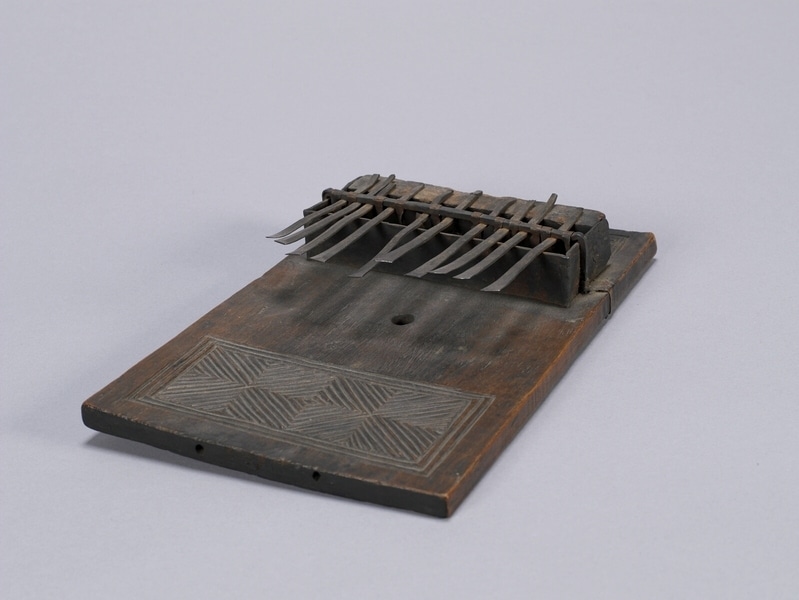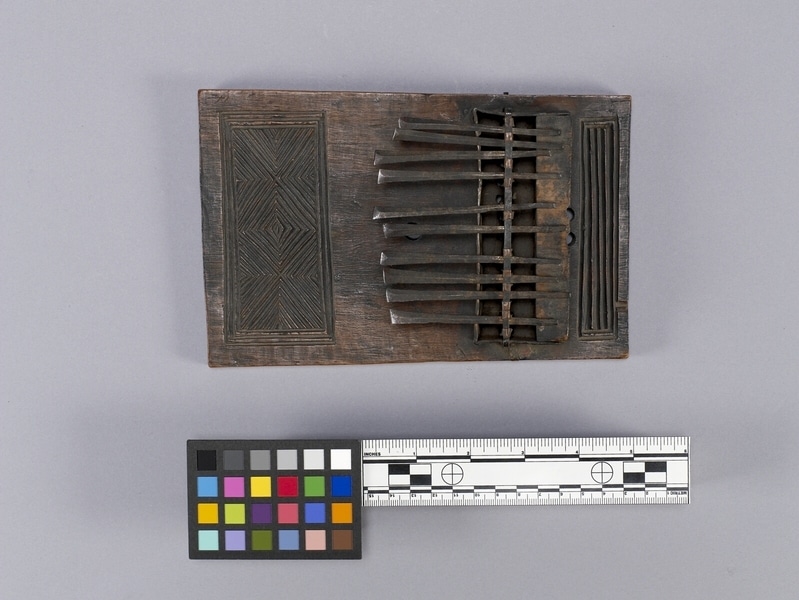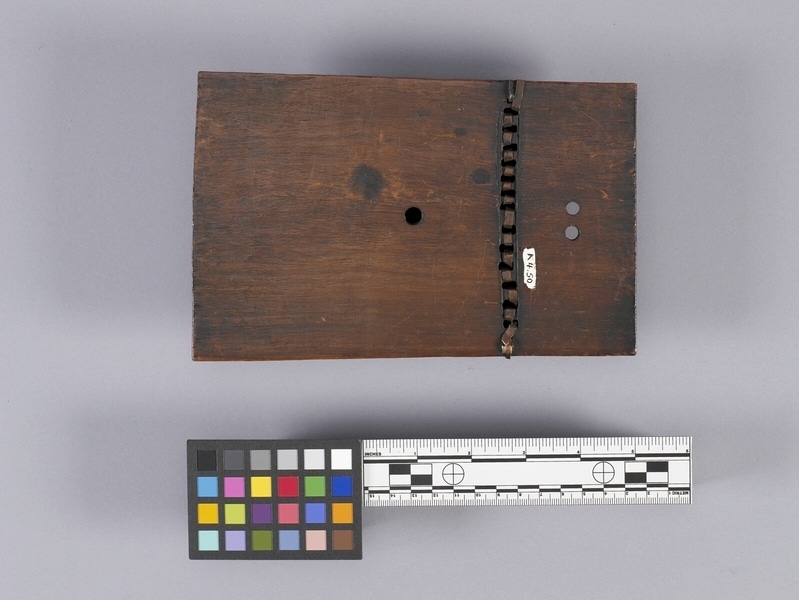Thumb Piano Item Number: K4.50 from the MOA: University of British Columbia



Description
Thin brown smooth-backed wood piece. Narrow rectangular wood platform has on top ten metal tongues (keys), placed lengthwise to the wood piece and held in place by a lateral bar wrapped in metal strips that are inserted into the wood piece through to the back. Large hole in the middle of the wood piece. Two carved geometric designs on the wood base. The main design consists of two horizontal rows of four squares with opposing diagonal lines, creating two x-shapes over eight squares in total surrounded by a double rectangular outline. The other design consists of three horizontal upraised lines surrounded by a rectangular outline.
History Of Use
The sanza, or mbira (Shona language) is a plucked idiophone (or lamellaphone) that has been in use for thousands of years, and is played widely throughout the African continent. It is known by many different names, e.g., kilembe, likembe, kadono, akogo, timbrh, and thumb piano and has undergone variations, such as the kalimba, but the general style and function remain consistent. The instrument has been played for both secular and ceremonial use, e.g., around the fire during social evenings, or to commicate with the ancestors.
Item History
- Made in Angola
- Owned by Marion Cowley before 1956
- Received from Marion Cowley (Donor) during 1956
What
- Name
- Thumb Piano
- Identification Number
- K4.50
- Type of Item
- thumb piano
- Material
- iron metal and wood
- Manufacturing Technique
- carved
- Overall
- height 3.5 cm, width 13.4 cm, depth 20.6 cm
Who
- Culture
- Southern African
- Previous Owner
- Marion Cowley
- Received from
- Marion Cowley (Donor)
Where
- Holding Institution
- MOA: University of British Columbia
- Made in
- Angola
When
- Ownership Date
- before 1956
- Acquisition Date
- during 1956
Other
- Condition
- fair
- Accession Number
- 1854/0002